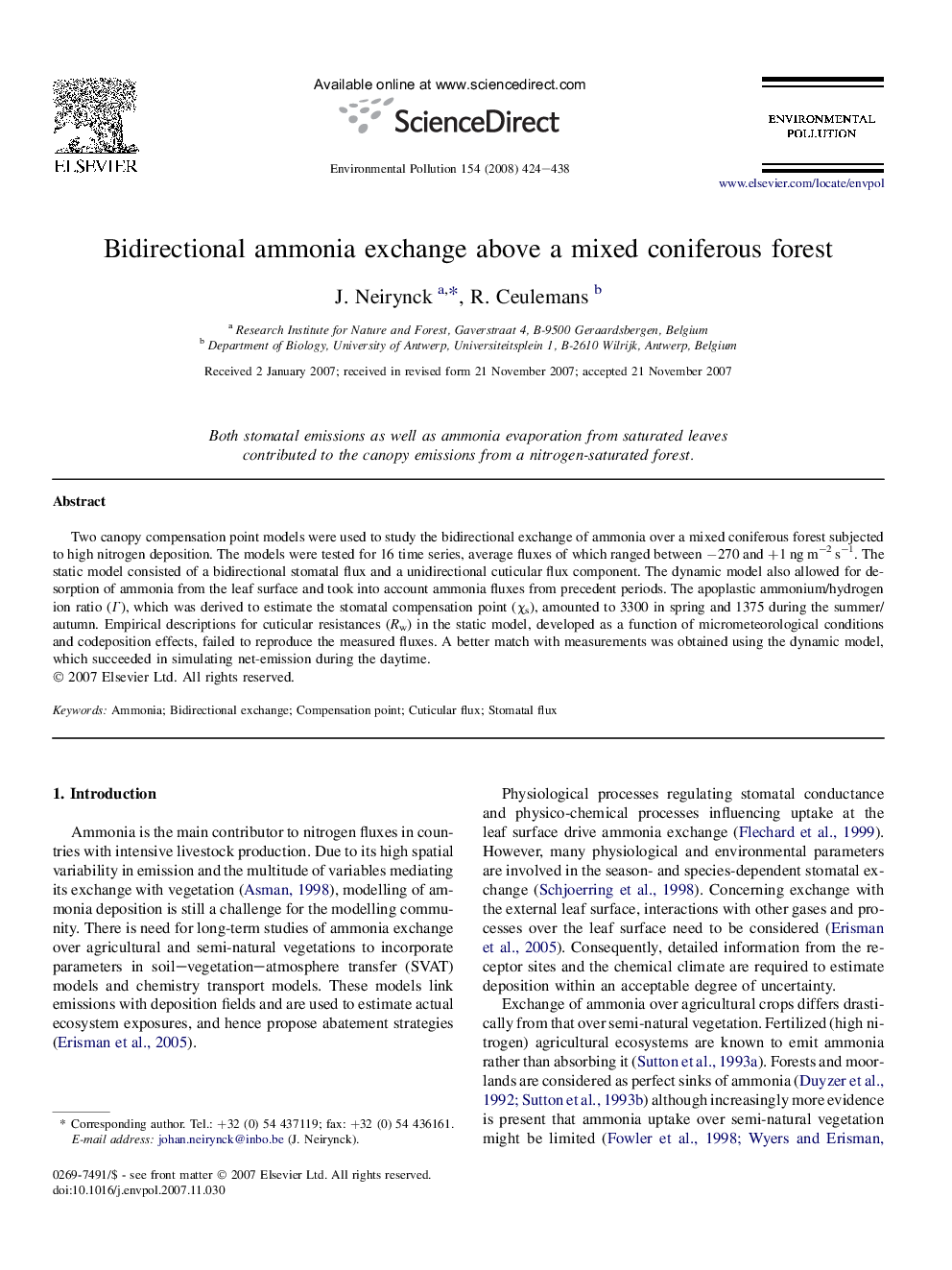| Article ID | Journal | Published Year | Pages | File Type |
|---|---|---|---|---|
| 4426879 | Environmental Pollution | 2008 | 15 Pages |
Two canopy compensation point models were used to study the bidirectional exchange of ammonia over a mixed coniferous forest subjected to high nitrogen deposition. The models were tested for 16 time series, average fluxes of which ranged between −270 and +1 ng m−2 s−1. The static model consisted of a bidirectional stomatal flux and a unidirectional cuticular flux component. The dynamic model also allowed for desorption of ammonia from the leaf surface and took into account ammonia fluxes from precedent periods. The apoplastic ammonium/hydrogen ion ratio (Γ), which was derived to estimate the stomatal compensation point (χs), amounted to 3300 in spring and 1375 during the summer/autumn. Empirical descriptions for cuticular resistances (Rw) in the static model, developed as a function of micrometeorological conditions and codeposition effects, failed to reproduce the measured fluxes. A better match with measurements was obtained using the dynamic model, which succeeded in simulating net-emission during the daytime.
